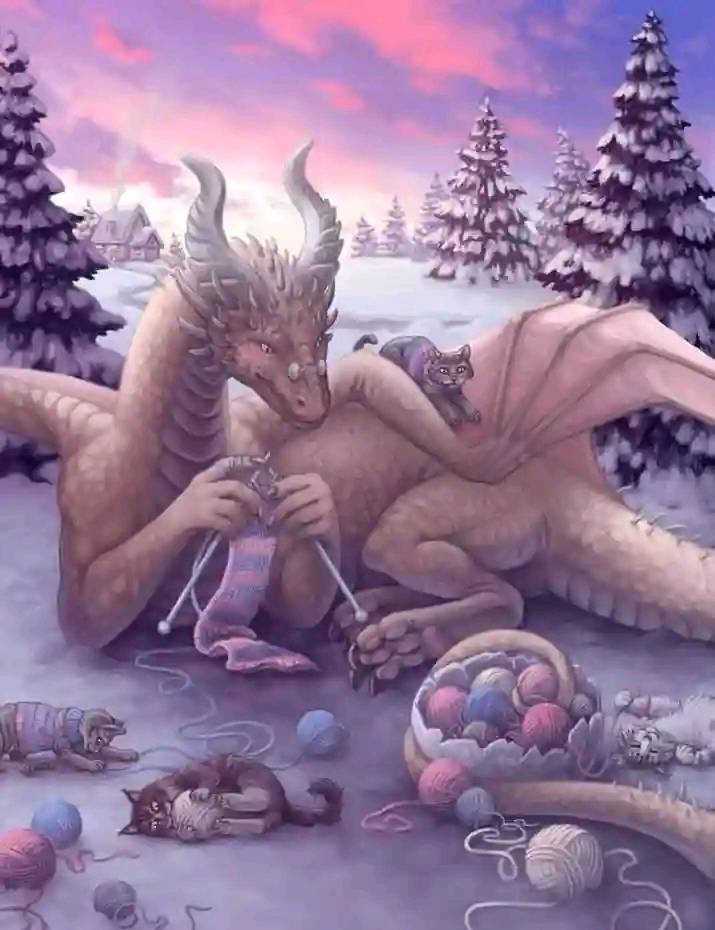Title: The Mythical Adaptations of the Dragon
Dragons, legendary creatures of myth and folklore, have captured human imagination for centuries. These majestic and powerful beings are known for their incredible adaptability in a variety of cultural contexts and settings. Although dragons are purely mythical, their adaptations in mythology and storytelling have made them enduring symbols of both awe and fear.
**Physical Adaptations:**
1. **Scale Variations**: Dragons exhibit remarkable diversity in their physical appearances. They may have scales of varying colors, sizes, and patterns, allowing them to blend into their natural environments or stand out as imposing figures.
2. **Wings for Flight**: Many dragon myths depict these creatures as having wings. These adaptations grant them the ability to soar through the skies, making them formidable aerial predators in the realm of mythology.
3. **Breath Weapons**: Dragons are known for their unique breath weapons, which can include fire, ice, venom, or other deadly elements. These adaptations make them formidable adversaries and bring terror to the stories in which they appear.
4. **Longevity**: Dragons are often portrayed as long-lived creatures, sometimes immortal. This adaptation adds to their mystique, making them ageless beings with accumulated wisdom and power.
5. **Reptilian Features**: With their scaly skin, sharp claws, and reptilian eyes, dragons exhibit a mix of features adapted from real-world reptiles. These adaptations connect them to the world of serpents and other ancient, feared reptiles.
**Behavioral Adaptations:**
1. **Hoarding Instinct**: In many myths, dragons are depicted as hoarders of treasures. This adaptation adds depth to their characters, showcasing their covetous nature and their desire to accumulate wealth.
2. **Solitary Lifestyle**: Dragons are often portrayed as solitary creatures, living in isolated lairs far from human civilization. This behavior adaptation adds an aura of mystery and danger to their presence in stories.
3. **Guardian Role**: In some mythologies, dragons serve as guardians of sacred places or valuable objects. Their adaptability as protectors adds an element of wisdom and nobility to their character.
4. **Shapeshifting Abilities**: In certain tales, dragons possess the ability to shapeshift into other forms, such as humans or animals. This adaptation allows them to move unnoticed among humans, adding intrigue and complexity to their narratives.
5. **Communication**: Dragons are often depicted as highly intelligent beings with the ability to communicate with humans or other creatures. This adaptation creates opportunities for interaction, alliances, or conflicts in the stories in which they appear.
**Environmental Adaptations:**
1. **Cultural Versatility**: Dragons have adapted to a wide array of cultures and settings. They have appeared in both Eastern and Western mythology, each with its own unique interpretations of these creatures. This adaptability allows dragons to transcend cultural boundaries and remain relevant in different societies.
2. **Symbolic Significance**: Dragons are often adapted to serve as symbols of various concepts, such as power, wisdom, or chaos. These symbolic adaptations give them multifaceted meanings and allow them to represent different ideas in different contexts.
3. **Adaptation in Art and Literature**: Over the centuries, dragons have been adapted in countless works of art, literature, and popular culture. These adaptations have allowed them to evolve and remain relevant in the modern world, shaping their appearances and roles in contemporary storytelling.
4. **Interpretation in Modern Media**: Dragons have been adapted into modern media, including films, video games, and books. Their adaptability in these platforms continues to fascinate and inspire new generations of enthusiasts, keeping the legend of the dragon alive.
In conclusion, the adaptations of dragons are a testament to their enduring appeal in the world of myth and fantasy. Their rich and diverse characteristics, behaviors, and symbolism have allowed them to transcend time and culture, remaining influential figures in human storytelling and imagination. Whether they are fierce and destructive adversaries or wise and benevolent protectors, dragons continue to captivate us with their mythic adaptability and the many roles they play in the realms of myth and legend.


